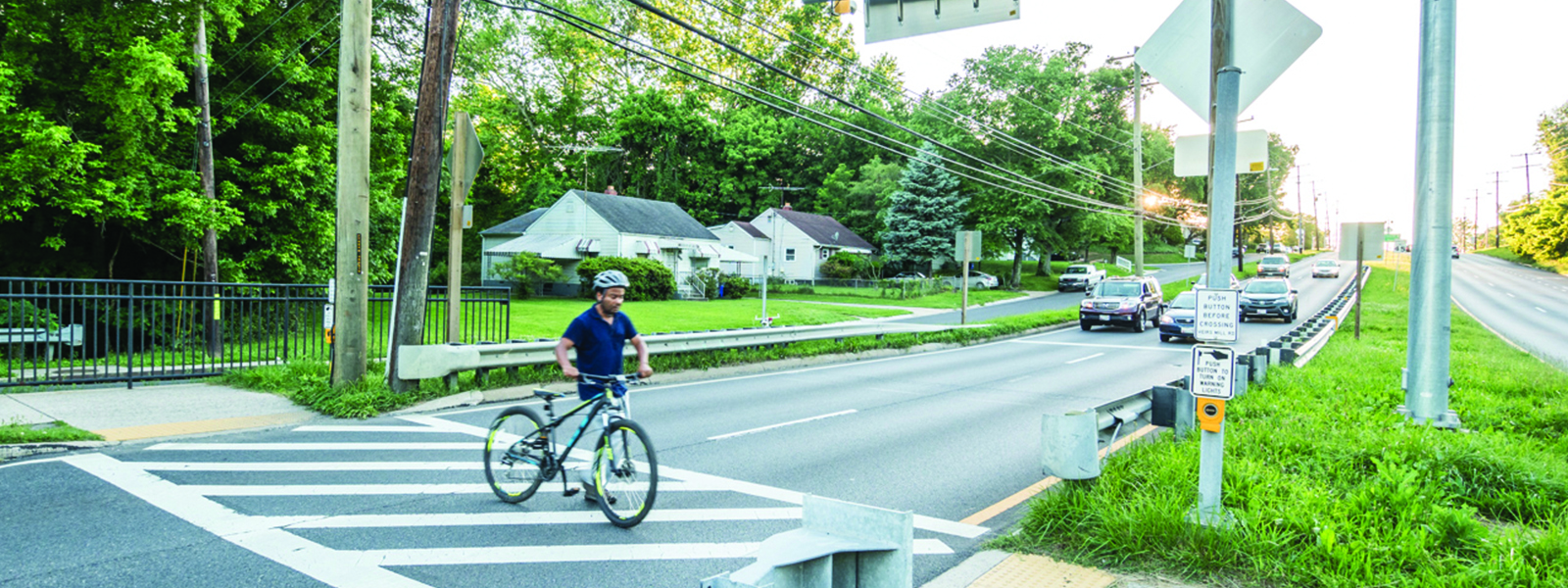
Study provides recommendations for improving how road access is managed around the county
WHEATON, MD – The Montgomery County Planning Department, part of The Maryland-National Capital Park and Planning Commission (M-NCPPC), will present the findings of the Access Management Study to the Montgomery County Planning Board at their meeting on July 28. Work on this study began in October 2021 with focused involvement from partner agencies and is intended to provide a review of existing access management practices and high-level recommendations on access management regulations, standards, and practices as they are practiced on the Montgomery County roadway network.
Access management is the coordinated planning, regulation, and design of access between roadways, and land development. Its purpose is to provide a systematic way to improve the safety and efficiency of moving people and goods while reducing conflicts between all modes using and crossing the roadway, including cars, heavy vehicles, transit vehicles, bicycles, and pedestrians.
Summary of findings:
- Improved access management is needed to support the county’s Vision Zero Action Plan
- Access management is a multi-agency responsibility
- Improvements to access management effectiveness require increased support in County Code
The findings detail recommendations for the Montgomery County Planning Department, Department of Transportation (MCDOT), Department of Permitting Services (DPS), Maryland Department of Transportation State Highway Administration (MDOT SHA), as well as interagency recommendations.
View the Access Management Study staff report for the briefing.
“We are pleased to present the findings of the Access Management Study to the Planning Board,” said project manager and transportation planner Steve Aldrich. “Improved access management is needed to support the county’s Vision Zero Action Plan due to the direct relationship between access and safety with 64% of non-interstate crashes in the county occurring at intersections.”
The study included the involvement of a transportation consultant, Mead & Hunt, who prepared their own assessment of the county’s strengths and weaknesses in regulating access management and provided recommendations. The resulting recommendations developed in this study weighed the consultant’s findings carefully in developing overall study recommendations.
Objectives of the study:
- Focus on Vision Zero and Complete Streets design techniques in the development of this new access management strategy.
- Develop clear policy guidance to explain how access onto county roads is managed.
- Evaluate how access management decisions are made under current county guidelines and regulations and assess how more desirable and equitable outcomes can be achieved with modifications, guidance, or clarification.
- Ensure that the study addresses the racial equity and social justice impacts of access management recommendations to ensure that more equitable treatment of access management issues is considered.
Over the course of 10 months, planners met periodically with a technical working group consisting of key personnel from MDOT SHA, MCDOT, and DPS to discuss access management issues and help oversee study progress. With consultant facilitation, feedback from this group and select members of the development community was sought on access management issues and challenges.